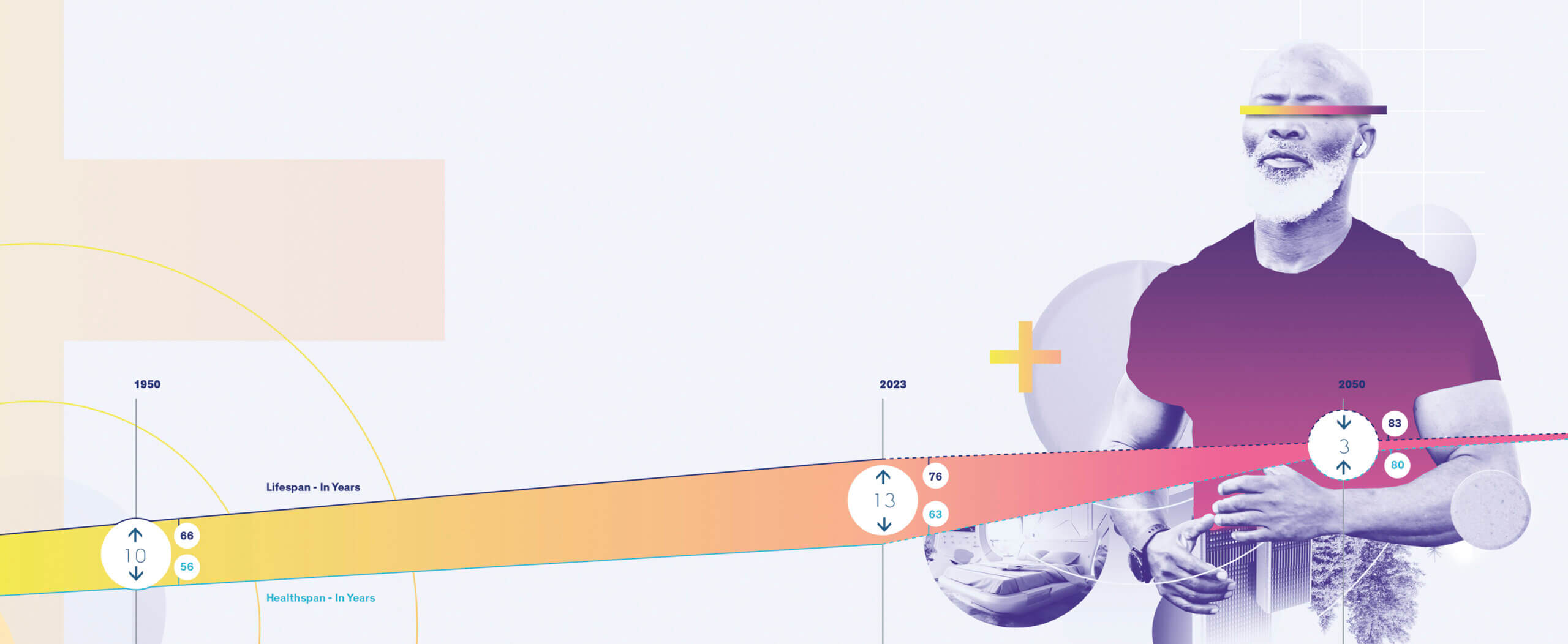“Healthspan” is the New Lifespan
How Do We Get There?
Leaps in lifespan have historically raced ahead of science’s ability to maintain healthspan. By the age of 65, 80% of Americans typically suffer from one chronic “disease of aging.” By 70, most are dealing with two such conditions, making aging beyond a certain point something to endure, not to look forward to.
Gains in lifespan in the near future will be incremental and measured in months or a small number of years. For instance, if cancer were cured tomorrow, the average lifespan would rise by just 2.5 years. Scientists are developing a menu of incremental treatments and approaches for a variety of diseases and conditions that together will expand this equation and alter what it means to age. Getting older is likely to get better.
A new generation of companies is emerging that hope to translate decades of lab work into decades of additional healthspan. Approaches vary wildly and include:
-
01
Age Reversal Therapies
The emerging field of epigenetics focuses on how changes in lifestyle, nutrition and environment affect how one’s genes work. By tweaking the mechanisms of epigenetics that turn genes on and off, scientists have succeeded in reprogramming mouse cells to make them act genetically younger. Animal researchers are discovering that an extra bit of a vitamin, physical exercise, a brief exposure to a toxin, and even an added dose of maternal nurturing can send signals through our epigenome and have lifelong impacts on the body and brain. The epigenetic connection to brain health in the elderly is proving a particularly promising area for researchers.
-
02
Synthetic Biology
Therapeutics that use bioengineered cells to correct genetic mutations and to repair damaged tissue are in the early stages of being tested in human clinical trials, often on patients with rare diseases that strike younger people. Vita Therapeutics, for example, is close to launching clinical trials of a treatment for Limb-Girdle Muscular Dystrophy, which typically affects children. The company’s technology creates stem cells derived from a patient’s own cells that its scientists then gene-edit using CRISPR to correct a mutation that causes the disease. The goal is to prove efficacy in children, and then to seek a much broader use for older patients who more broadly suffer from muscle wasting.
-
03
Phenomics
This new field aims to collect, monitor and analyze with AI a host of biomarkers—including DNA, proteins and other molecular markers—that can be used to better predict and prevent disease. One use of this data: polygenic embryo testing, used to predict the chance of disease. These tests, available in fertility clinics today, analyze embryonic chromosomes and assign them a score based on the likelihood that they will develop diseases like cancer and diabetes. (For more on phenomics, see the Self-Health Rising, Future vs. Cancer and Wellness and Nutrition sections.)
-
04
The Immune System
Scientists are working to better understand the role of the immune system in virtually all diseases, including efforts by the newly launched Human Immunome Project based in New York City that is setting out to research a project on the scale of the Human Genome Project. Better vaccines using new technologies like mRNA will expand over the next few years along with other interventions that bump up the immune system to fend off diseases. Exciting approaches are emerging to activate the immune system to kill cancer cells. New therapeutics use monoclonal antibodies to disable viruses and bacteria, and bioengineered CAR T cells to attack and hopefully destroy tumors. (For more on cancer and the immune system, see the Future vs. Cancer section.)
-
05
Machine Solutions
Yet another tack to extending lifespan is building better-engineered spare parts, including human-engineered prosthetics, 3D-printed organs, better hip, knee and other replacements, and lifesaving devices like pacemakers. (For more on machine solutions, see the Make Me Bionic section.)
This emergence of antiaging science is a new public health paradigm and its impact will be on the order of magnitude of the introduction of basic public health in the early part of the 20th century, or antibiotics and vaccines in the middle of the 20th century.
Jay Olshansky
University of Illinois School of Public Health

